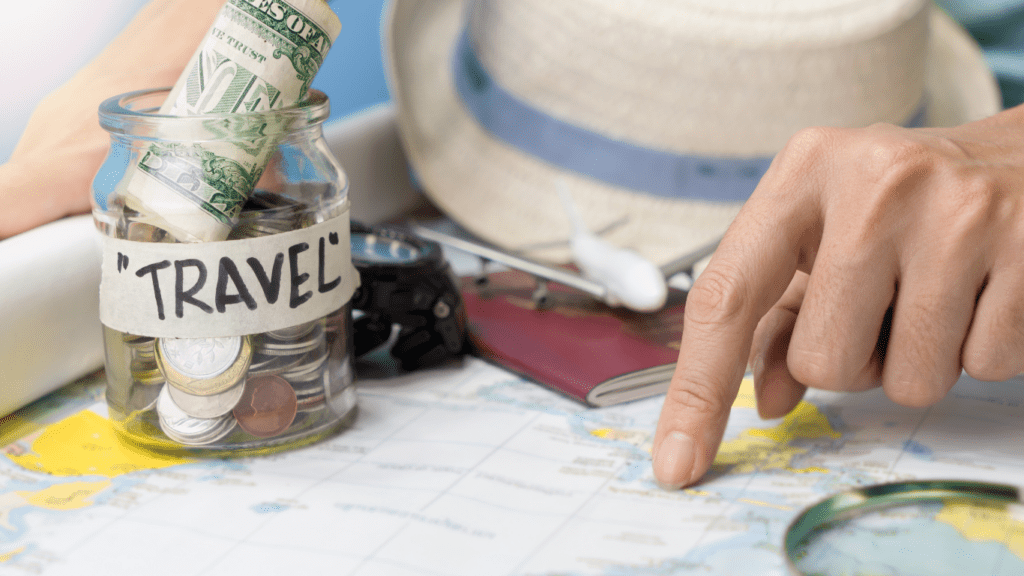Why Travel on a Budget?
Traveling on a budget opens doors to unique experiences that might be overlooked in expensive itineraries. Prioritizing affordability often leads to exploring local cultures, sampling street food, and using public transportation, which offer a more authentic connection to a destination.
Budget travel allows for visiting more places without overspending. Saving on one trip can provide resources for future adventures, letting me extend my travel calendar throughout the year.
It’s financially empowering to travel affordably, reducing debt risks or credit dependency. Affordable travel options, like hostels, budget airlines, or free activities, allow me to explore responsibly while staying within my means.
Planning Your Budget-Friendly Trip
Careful planning ensures an affordable and enjoyable adventure. I focus on realistic steps to make the most out of my travel budget.
Setting a Travel Budget
I start by setting a clear budget for my trip. This includes estimating costs for flights, accommodation, meals, transport, activities, and emergencies. For example, I allocate $40-$60 per day for food and $20 for local transportation. Tracking tools like apps or spreadsheets keep my expenses organized.
I prioritize savings by cutting non-essential expenses, like dining out, a month before my trip. This builds a surplus for costs like admissions or souvenirs. By planning within my means, I avoid unnecessary debt.
Choosing Budget-Friendly Destinations
- I choose destinations with favorable currency exchange rates or low-cost living expenses. For instance, Southeast Asian countries like Vietnam or countries in Eastern Europe offer excellent value.
- I research local prices for food, lodging, and activities.
- I look for off-the-beaten-path locations to avoid tourist hotspots.
- Smaller towns or less popular countries often have cheaper services.
- Choosing destinations using budget-travel sites or recommendation tools can simplify the process.
Best Times to Travel for Savings
I plan trips during off-peak seasons to take advantage of lower prices. For flights, traveling mid-week and booking three months in advance often offers better deals. Beach destinations are generally cheaper during colder months, and ski resorts drop prices after peak winter.
Flexibility in travel dates maximizes savings. I rely on fare comparison engines or apps to pinpoint the least expensive travel periods.
Saving on Transportation
Reducing transportation expenses can significantly lower overall travel costs. I focus on finding economical flights, cost-effective ground travel, and packing light to avoid extra fees.
Budget Airlines and Flight Deals
I regularly track flight comparison platforms like Skyscanner and Google Flights for the best deals. Budget airlines often provide low-cost options for short- and medium-haul travel, although additional fees for baggage and seat selection may apply. Booking tickets during sales or in advance often results in lower prices, especially for international trips. Signing up for airline newsletters or fare alert tools ensures I don’t miss exclusive discounts or flash sales.
Affordable Ground Transportation Options
I rely on local public transportation, like buses and trains, which are usually cheaper than rental cars and rideshare services. In cities, I consider travel passes or cards offering unlimited rides for a set period. For short distances, walking or renting a bicycle cuts costs while providing an immersive experience. On intercity routes, options like night buses or budget train services often offer substantial savings compared to standard fares.
Tips for Traveling Light
Packing light minimizes baggage fees, especially on budget airlines. I stick to essential items, opting for a carry-on whenever possible to avoid checked luggage costs. Organizing versatile clothing that can layer saves space and weight. Compressible packing cubes help optimize packing, ensuring I make the most of limited space.
Accommodation on a Budget
Finding affordable places to stay can make budget travel more achievable. I focus on creative, low-cost lodging choices to reduce expenses without sacrificing comfort and experience.
Affordable Lodging Options
Booking budget hotels and vacation rentals offers a balance between cost and convenience. Platforms like Booking.com and Airbnb provide filters to find economical stays. I also search for discounted rates by booking last-minute deals or checking for promotions directly at hotel websites. Staying slightly outside city centers often helps secure cheaper options, with better value for longer stays.
Benefits of Hostels and Homestays
Staying in hostels or homestays is an effective way to cut accommodation costs. Hostels provide:
- shared dorms
- communal kitchens
- independent rooms
for travelers seeking affordability. I enjoy the social atmosphere in hostels, where meeting other travelers often leads to shared experiences or tips. Homestays, available through sites like Homestay.com, offer cultural immersion by connecting with local families, which often includes meals or detailed area guidance.
Unique Alternatives: Couchsurfing and House-Sitting
Couchsurfing enables free stays by connecting with locals offering spare accommodations. Through Couchsurfing.com, I find hosts willing to exchange housing for cultural interaction or companionship. House-sitting, organized by platforms like TrustedHousesitters, lets me stay in someone’s home for free in exchange for looking after pets or household tasks. These options minimize lodging expenses while offering unique, immersive experiences.
Eating Well Without Overspending

Staying on budget doesn’t mean compromising on good meals. With strategic planning, it’s easy to enjoy local cuisines and maintain affordability.
Finding Local Food on a Budget
I explore local markets, as they’re a great place to find fresh, affordable food. Street food vendors often offer authentic dishes at lower prices than restaurants. For example, I grab tacos in Mexico or pad Thai in Thailand from roadside stalls. I also look for local eateries frequented by residents, avoiding tourist-heavy spots that typically charge a premium.
Preparing Your Own Meals
If I have access to a kitchen, I prepare some of my meals to save money. Grocery stores and markets carry regional ingredients, allowing me to make simple meals like sandwiches, pasta, or stir-fries. I carry basic essentials like instant oats or snacks for convenience, reducing the need for costly dining throughout the day.
Tips for Dining Out Affordably
When dining out, I search for lunch specials, which are often cheaper than dinner menus. Buffet-style meals provide value for the price, especially in places like India or Southeast Asia. I stick to water instead of expensive drinks and share dishes if portions are large. Apps like Yelp or TripAdvisor often help me discover affordable spots with good reviews.
Budget-Friendly Activities and Entertainment
Entertaining experiences don’t require a high budget. Many activities and attractions offer free or inexpensive options, providing memorable adventures without financial stress.
Free or Low-Cost Attractions
Many destinations feature attractions that don’t cost anything or require a small fee. National museums, historical sites, and art galleries often have free entry days or discounted tickets. I recommend researching these options ahead of time to align them with my travel dates. Walking tours, often donation-based, also provide an insightful and affordable way to discover a city’s history and culture. Exploring local festivals, street performances, and markets can also provide enriching experiences at little or no cost.
Enjoying Nature and Outdoor Adventures
Nature offers countless opportunities for low-cost entertainment. Hiking trails, public parks, and beaches are great places to spend a day with minimal expenses. Camping at designated sites provides affordable accommodations while immersing travelers in natural surroundings. Picnics in scenic locations, birdwatching in nature reserves, or cycling routes are enjoyable and budget-friendly ways to explore the outdoors. I suggest researching accessible outdoor spaces to maximize my trip.
Taking Advantage of Local Discounts
Many destinations offer discounts for students, seniors, or residents, which I take advantage of whenever applicable. Local tourism offices usually provide city passes or combo tickets for attractions, public transport, and activities at reduced prices. I ensure to carry necessary identification to qualify for these offers. Apps and websites tailored to travelers often include exclusive discounts or special promotions that I use to make the most of my budget.





